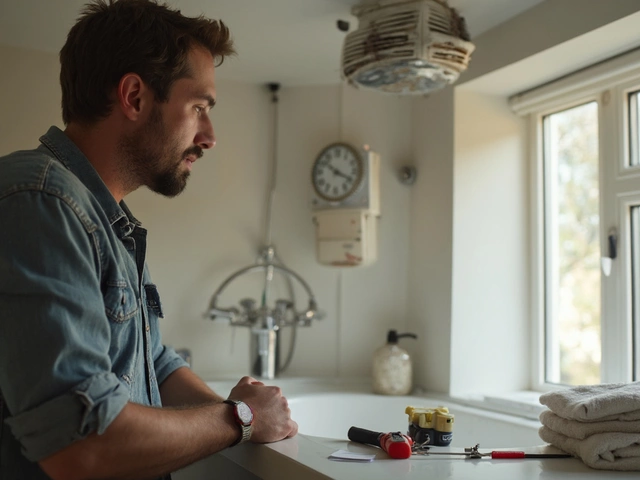Picture this: You open your fridge, expecting a blast of cold air—and instead, your milk is lukewarm and last night’s leftovers smell off. Nothing turns a fridge into a glorified cupboard faster than a failed compressor. Most folks don’t think about what goes on behind that humming box in their kitchen, but when a compressor bites the dust, you can’t ignore it. Figuring out if your fridge compressor is actually gone isn’t always obvious. But ignoring the signs can hit your wallet with spoiled groceries, high energy bills, or even a hefty repair bill.
What Does a Fridge Compressor Actually Do?
The compressor is the fridge’s muscle. Its job? Circulate refrigerant, keep that inside compartment chilled, and keep food safe. It’s a bit like the heart of your refrigerator—when it’s healthy, everything just works. But if it gets damaged or stops running right, the whole system falls apart. Most modern fridges use a small, powerful motor that pressurizes the refrigerant and forces it through a set of coils. As the refrigerant expands and contracts, it removes heat from the fridge interior and dumps it out the back. An average household compressor can run for 10 to 20 years, but it’s not invincible—things like dust, electrical surges, or just wear-and-tear can take it down.
If you listen closely on a typical day, you’ll hear your compressor cycle on and off. You might notice a faint hum or a gentle clicking. On newer fridges, this cycle might be very quiet, but if you press your ear to the side or back, you can usually catch it. The entire cooling process rides on the compressor working smoothly. If this system gets out of whack, cooling drops and food safety is at risk.
Here’s a fact: on hot days, your fridge’s compressor might run up to 50% longer. So if your kitchen’s warm, a normally healthy compressor will work overtime, but still keep things cool. If your fridge is warm even though your home is cool, you’re probably facing a compressor—or related part—problem.
Common Signs Your Fridge Compressor Is Gone
You don’t need a lab coat to spot a failing fridge compressor. The most obvious red flag? Food just isn’t cold anymore, and turning down the temperature dial does nothing. But let’s break it down to concrete signs.
- Warm Fridge/Freezer: Milk spoils fast, veggies get limp, ice cream turns into soup. If both the fridge and freezer sections feel warmer than usual, and there’s no ice buildup around vents, suspect the compressor.
- Compressor Isn’t Running: Place your hand on the compressor (that black tank-like thing at the back). If it’s stone-cold and silent for hours, it should be running, but it’s not. If it’s warm but dead silent, same deal.
- Odd Noises: Clicking, rattling, or buzzing coming from the compressor can mean it’s trying to start but failing. That repetitive click every minute or two? It’s often the overload protector tripping because the compressor can’t start.
- Excessive Heat: Compressors do get warm, but if yours is so hot it’s uncomfortable to touch, it’s overworking—or failing. Sometimes, burning smells come along for the ride if there’s a wiring problem.
- Fridge Won’t Start but Light Works: If your fridge’s interior light works but the compressor never kicks on, the issue is rarely the power source. It usually means trouble with the compressor or one of its starting circuits.
An interesting tip: Sometimes your compressor isn’t completely gone but struggles to start up, especially after a power outage or brownout. This can lead to random periods where your fridge cools fine, then suddenly doesn’t. That rollercoaster of cold-to-warm points right at the heart of the cooling system.

DIY Diagnostic Checklist Before Calling for Repair
No one likes the idea of shelling out for a repairman if it’s just a tripped breaker or a clogged vent. So, what can you check yourself before you plan for the worst?
- Check Power Supply and Outlet: Plug a lamp or phone charger into the same outlet. If it works, your fridge is getting power.
- Inspect Temperature Settings: Sometimes a knob or digital panel gets bumped. Make sure your settings aren’t accidentally set to "off" or "vacation mode."
- Clean the Condenser Coils: Dirty coils put extra strain on compressors. Unplug the fridge and clean the back or bottom coils with a brush or vacuum. Actual cases have shown a simple coil cleaning can drop fridge temperatures by a few degrees in just a day.
- Listen for Compressor Operation: After plugging the fridge back in, listen for that gentle hum. No noise? Could be the start relay or the compressor itself. If you hear a regular clicking noise, that’s a red flag.
- Touch Test: Carefully feel the compressor. It should be warm, not scorching. Ice-cold or red-hot usually spells trouble.
- Check for Frost or Blocked Vents: If vents inside your fridge are blocked with frost or food, airflow drops, making the compressor overwork. Rapid frost-up often means a different fixable problem, not a dead compressor.
Bonus fact: On many fridges, the compressor relay or overload protector is a little box attached to the side of the compressor. Swapping out this $20 part is sometimes enough to get things running again—the equivalent of jump-starting a car. Just keep your hands safe and power off before poking around there.
When to Repair, When to Replace: Crunching the Numbers
A busted compressor can rack up a hefty repair bill—think £300–£500, depending on your fridge’s size, brand, and age. That’s because the compressor is typically hermetically sealed (welded shut) and full of refrigerant gas, and swapping it out can mean evacuating and refilling the system. Unlike changing a lightbulb or a door seal, this is specialist work.
If your fridge is less than 10 years old and in otherwise great shape, fixing makes sense, especially for expensive brands like Samsung, LG, or Bosch. Many higher-end models actually come with extended compressor warranties up to 10 years—worth checking those terms before paying a penny.
But if your fridge is closing in on 15 years, or you’ve had a string of other issues (leaky door seals, broken ice maker, or constant frost), dropping serious cash on a compressor just doesn’t add up. Energy efficiency tanks as fridges age too—a knock-on hit to your power bill. Modern fridges use up to 40% less power than an older model from the 2000s; sometimes, your next electricity bill is the most telling sign it’s time to swap.
- If repair costs more than half the price of a new fridge, replacing wins.
- Check government or local recycling programs—some offer cash for trading in old appliances, making an upgrade less painful.
- DIY repairs on sealed compressor systems are a big safety and environmental hazard. Always leave refrigerant work to certified techs.
A real-world example: A friend of mine had a 13-year-old fridge, started hearing clicks-and-humming one day, cooling slowly faded. The tech quoted him £400 for a new compressor. He swapped it for a new, energy-efficient model. Three months later, he said his energy bill dropped by 15%, a nice bonus on top of the peace of mind.

Pro Tips to Stretch Your Compressor’s Life
Want your fridge to avoid these compressor nightmares? Here’s what actually makes a difference—habits you can change right now.
- Keep the Coils Clean: Do this twice a year. Dust chokes coils, making the compressor work overtime. Owners who stick to this simple habit often squeeze several extra years out of their fridges.
- Don’t Overfill: Food crammed in every crevice blocks air flow and makes cooling uneven. Leave some space around vents—especially on shorter, compact fridges where airflow paths are more limited.
- Avoid Hot Food: Let leftovers cool to room temp before stacking them inside. Dumping in steaming soup forces the compressor to run nonstop for hours.
- Check Door Seals: Gasket leaks mean warm air gets in. Test by closing the door on a piece of paper; if it pulls out easily, replace or clean the seal.
- Level It Out: Fridges that tilt back and forth can mess up refrigerant flow and even drain oil away from the compressor. Use a small bubble level and adjust those feet.
- Mind Power Surges: Using a surge protector on your fridge can block electrical spikes that fry compressor windings. Especially important in areas with erratic power supply.
- Don’t ignore weird noises. A buzzing or clicking compressor is a plea for help, not a soundtrack.
The oldest working fridge ever recorded, a 1930s Kelvinator, lasted over 85 years(!)—thanks to simple, regular maintenance and lucky engineering. You don’t have to aim for that record, but some care goes a long way.
If your fridge compressor is gone, or you spot the warning signs, don’t just hope for the best. Use this guide as your stress test. Sometimes, quick action can save your fridge (and your groceries); sometimes, it’s time to let it go and make the leap to a new, more efficient model. Either way, you’ll be better prepared than most people who find out too late—usually when their ice cream puddles on the shelf.





